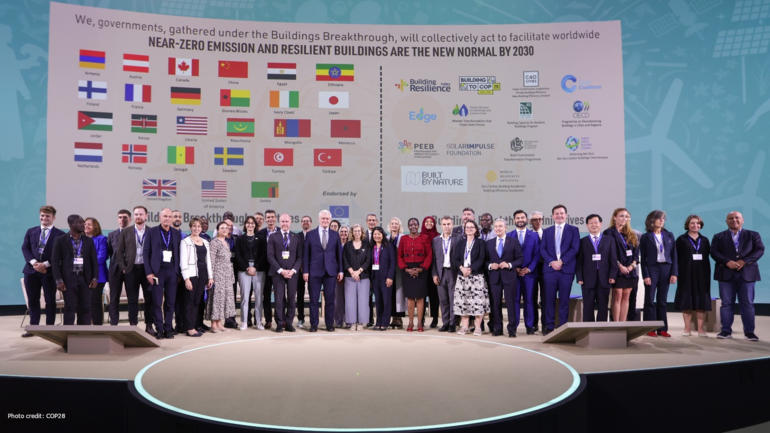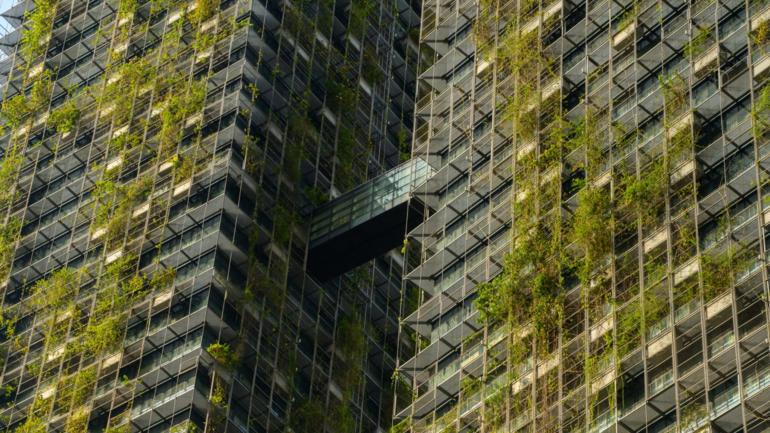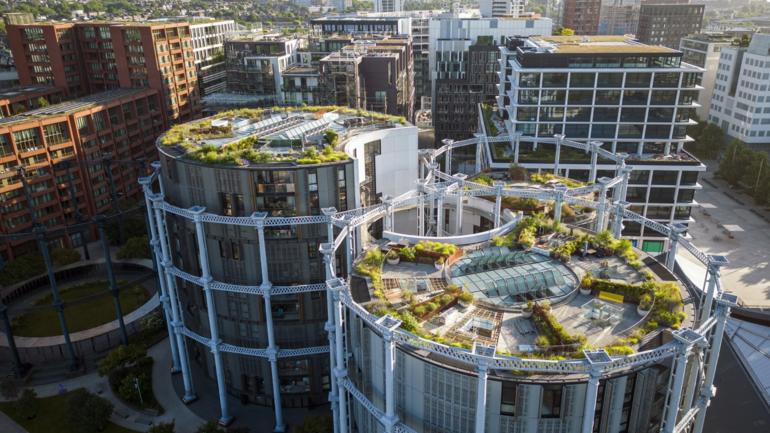COP24, Katowice, 7 December 2018: Dramatic action will be needed by governments, cities and business if the global buildings and construction sector is to cut its carbon footprint in line with international agreements, according to a new report released today by the Global Alliance for Buildings and Construction, of which WBCSD is the c-chair of the Steering Committee.
There is good news. The 2018 Global Status Report — Towards a Zero-Emission, Efficient and Resilient Buildings and Construction Sector, highlights that emissions from buildings and construction may have peaked in the past few years, with energy efficiency gains in areas such as heating, lighting and cooking and with more offices and homes being powered by cleaner forms of energy. The study was written by the International Energy Agency and UN Environment.
Efficiency gains are also being realized through shifts towards energy saving technologies like heat pumps, improved windows and insulation, the use of less energy-intensive materials, and buildings design. However, the report underlines that the buildings sector – a huge engine of the global economy – still accounts for a significant 39 percent of total energy-related CO2 emissions and 36 percent of final energy use.
“Buildings are a key driver of energy demand, and developments within the sector such as the growing uptake of air conditioners are having a big impact on energy and environmental trends at the global level,” said Dr Fatih Birol, Executive Director of the International Energy Agency. “If we don’t make buildings more efficient, their rising energy use will impact us all, whether it be through access to affordable energy services, poor air quality or higher energy bills.”
The number of new buildings is likely to grow rapidly in the coming years, especially in Africa and Asia. This rapid growth will challenge the target of a 30 percent energy intensity improvement in buildings by 2030, needed to put the sector on track to meet the goals of the Paris Climate Change Agreement.
“It’s critical we have a big change over the next couple of years in how we do buildings and construction,” said Joyce Msuya Deputy Executive Director of UN Environment. “We only need to look at the current norms and quality of many buildings to see that we can do so much better. We need to raise the bar in energy-efficient, green buildings and far better practice in construction.”
Energy efficiency investment in buildings slows
The new report highlights an emerging gap between total energy efficiency spending – which increased by just over four per cent in 2017 to USD 423 billion – versus rapidly growing total investment in building construction and renovations. This indicates a slow-down in the rate of energy efficiency investment as a share of total investment when compared to previous growth rates.
An emerging challenge—cooling buildings
The report flies a red flag over the sharply rising energy demand for cooling systems and air conditioners, linked with improving incomes in developing countries and higher temperatures – such as recent heat waves this year in many parts of the globe – as a result of climate change.
Energy use for ‘space cooling’ has already increased 25 per cent since 2010 and there are now more than 1.6 billion air conditioning units in buildings globally. Today, the largest markets are not in the hottest countries on the planet: only 8 per cent of the 2.8 billion people living in places with average daily temperatures above 25 degrees have an air conditioner.
There are many ways to deliver cooling in buildings, and the entry into force of the Kigali Amendment to the Montreal Protocol on Substances that Deplete the Ozone Layer could provide a boost to one of them, the global penetration of air conditioners that use climate-friendly gases. This needs to go hand in hand with efforts to achieve much higher levels of efficiency.
The power of National Climate Action Plans (NDCs)
The scaling-up of national climate action plans—known as Nationally-Determined Contributions (NDCs)— represents a key opportunity to address a wide range of issues, by addressing policy gaps and unleashing a more committed decarbonization of the buildings and construction sector.
Currently around 104 NDCs mention specific actions to enhance energy-efficiency in buildings, building codes and energy certifications, yet only a few NDCs cover construction and ‘embodied carbon’ linked with the manufacturing of materials like steel and cement used to construct buildings in the first place.
Resilient buildings – needed to be better prepared
According to the report, building standards need to evolve to reflect the urgency for more resilient buildings in the face of climate change and extreme events like storms, floods, high wind speeds and soaring temperatures.
Increasing numbers of real estate asset managers are now mapping climate risks for their buildings in their national adaptation plans communicated to UN Framework Convention on Climate Change. Brazil, Burkina Faso, Kenya and Sri Lanka are among the countries that have included buildings in their national adaptation plans.
The report also cites several initiatives that could assist in fast tracking improvements. Close to 500 companies with trillions of dollars in revenue, including several property, construction, cement and steel firms have now joined the Science Based Targets initiative, aligning their emission reductions with the Paris Agreement. In September at the Global Climate Action Summit, the World Green Business Council launched its Net Zero Carbon Buildings commitment.
Notes to editors
The report was prepared by the International Energy Agency and UN Environment.
Download the Global Status Report 2018:
About the Global Alliance for Buildings and Construction
Hosted by UN Environment, the Global Alliance for Buildings and Construction aims to mobilize all stakeholders from the Buildings and Construction sector to scale up climate actions towards a zero emission, efficient and resilient sector.








